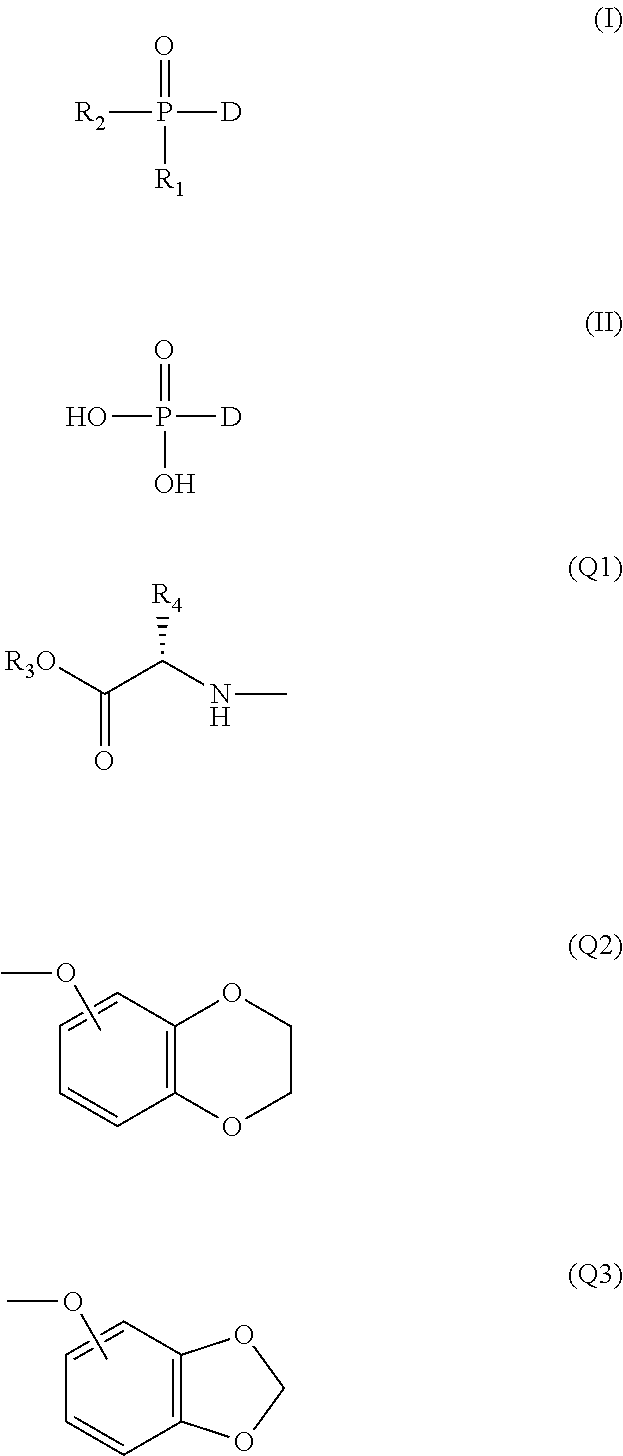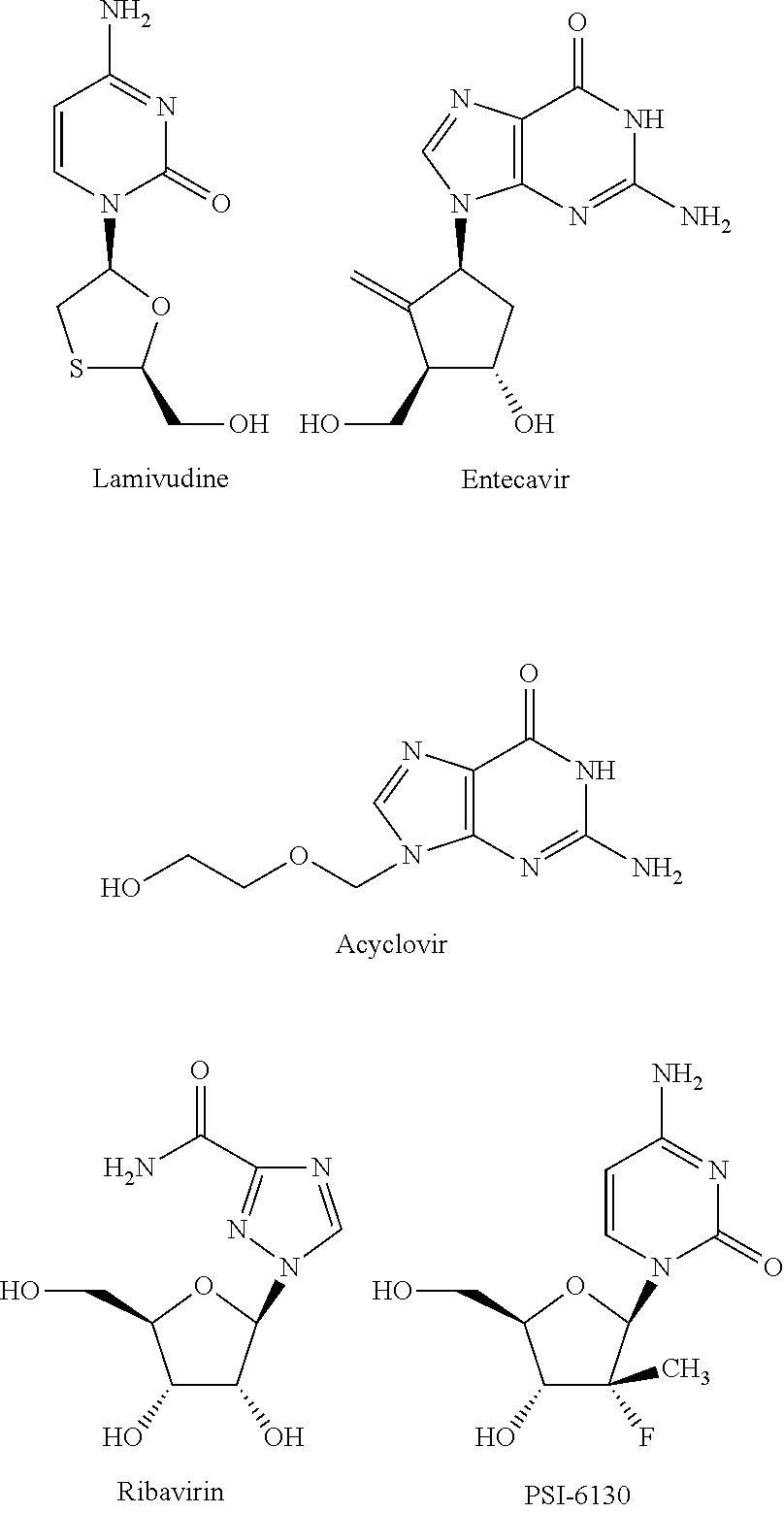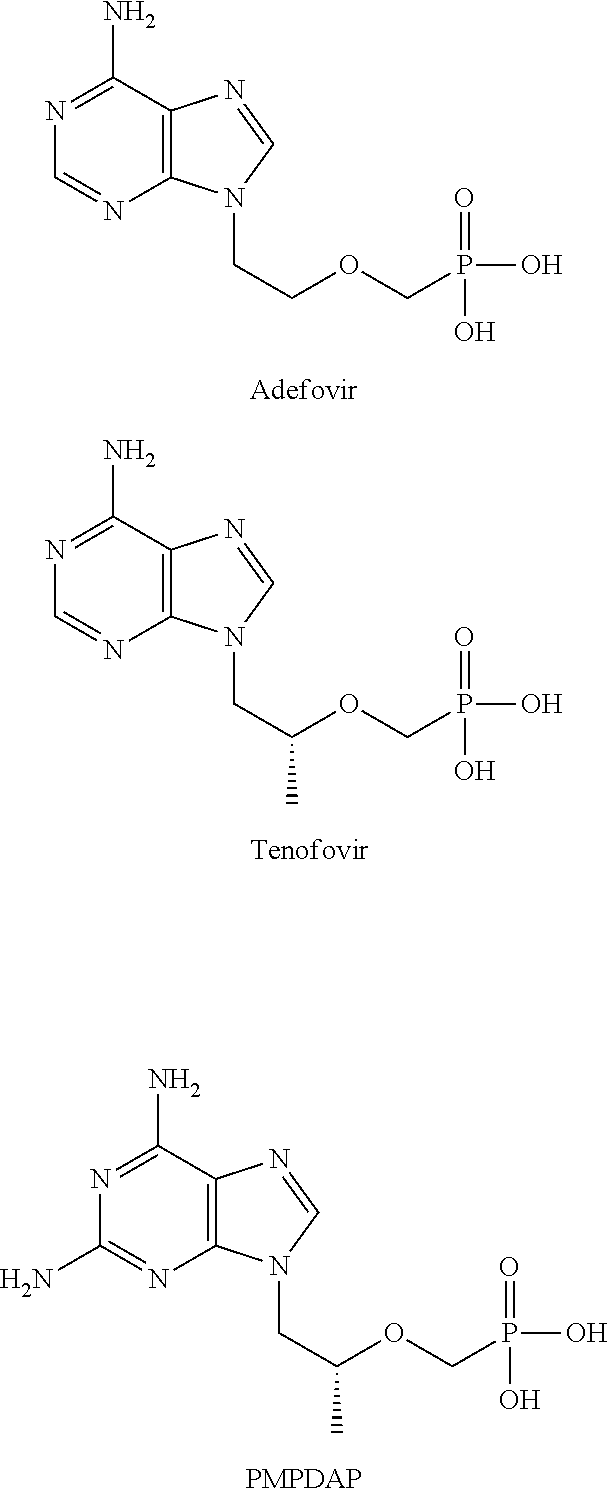Phosphoric acid/phosphonic acid derivatives and medicinal uses thereof
a technology of phosphoric acid and derivatives, applied in the field of phosphoric acid/phosphonic acid derivatives, can solve the problems of unstable efficacy of interferon, still far from meeting clinical requirements, and greater side effects
- Summary
- Abstract
- Description
- Claims
- Application Information
AI Technical Summary
Benefits of technology
Problems solved by technology
Method used
Image
Examples
reference example 1
Preparation of 9-[[bis-(phenoxyl)-phosphonyl-methoxyl]-ethyl]-adenine (i-1)
[0033]
[0034]13 g of 9-[(phosphonyl-methoxyl)-ethyl]-adenine (PMEA) and 9.4 g of phenol were added to 100 ml of N-methylpyrrolidone and heated to 90° C. and stirred, and then 10 ml of triethylamine and 20 g of dicyclohexylcarbodiimide were added successively, heated and stirred at 90° C. for 15 hours. It was naturally cooled overnight, and the solid was filtered; the filtrate was concentrated under reduced pressure, the residue was dissolved in ethyl acetate and washed with the saturated solution of sodium carbonate (2×200 ml) and the saturated solution of sodium chloride (2×200 ml) successively, the organic layer was dried by anhydrous sodium sulfate overnight, the dessicant was then filtered, and the filtrate was evaporated under reduced pressure to dryness, the resulting residue was separated by silica gel column chromatography, eluted with a mixed solvent of dichloromethane:methanol (20:1), and the desired...
reference example 2
Preparation of 9-[[bis-(naphthoxy)-phosphonyl-methoxyl]-ethyl]-adenine (i-2)
[0035]
[0036]With reference to the method of Reference Example 1, naphthol was used instead of phenol to react with PMEA, the reaction product was purified by separation, to obtain i-2, with a yield of 27%. 8.16 (s, 1H); 8.12 (s, 1H); 7.73-7.77 (m, 2H); 7.45-7.59 (m, 10H); 7.20-7.25 (m, 6H); 6.22-6.34 (m, 2H); 4.35-4.33 (t, 2H); 3.92-3.90 (t, 2H); 3.79-3.77 (d, 2H).
reference example 3
Preparation of 5′-[((phenoxyl-1-methoxylcarbonylethylamino)-phosphoryl]-2′,3′-dideoxy-3′-thia-cytidine (Cf1109)
[0037]
[0038]2.1 g (0.01 mol) of phenyl dichlorophosphate and 1.3 g (0.01 mol) of L-alanine methyl ester were dissolved in 30 ml of anhydrous dichloromethane, and cooled to −78° C. A solution of 2 ml of triethylamine dissolved in 20 ml of anhydrous dichloromethane was added dropwise with stirring, the rate of the dropwise adding was controlled to keep the reaction temperature at −78° C. After adding, when the reaction temperature was slowly raised to room temperature, stirring was continued for 1 hour. The solvent was evaporated under reduced pressure, and 30 ml of anhydrous diethyl ether was added to the residue and filtered. The filtrate was evaporated under reduced pressure to dryness to obtain a colourless oily matter. i.e., phosphoramide intermediate V1, which was directly used in the next step reaction.
[0039]0.21 g of lamivudine was dissolved in 50 ml of THF, and then ...
PUM
| Property | Measurement | Unit |
|---|---|---|
| temperature | aaaaa | aaaaa |
| temperature | aaaaa | aaaaa |
| temperature | aaaaa | aaaaa |
Abstract
Description
Claims
Application Information
 Login to View More
Login to View More - R&D
- Intellectual Property
- Life Sciences
- Materials
- Tech Scout
- Unparalleled Data Quality
- Higher Quality Content
- 60% Fewer Hallucinations
Browse by: Latest US Patents, China's latest patents, Technical Efficacy Thesaurus, Application Domain, Technology Topic, Popular Technical Reports.
© 2025 PatSnap. All rights reserved.Legal|Privacy policy|Modern Slavery Act Transparency Statement|Sitemap|About US| Contact US: help@patsnap.com



